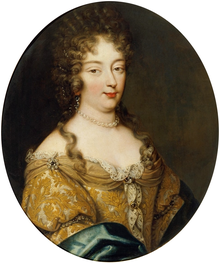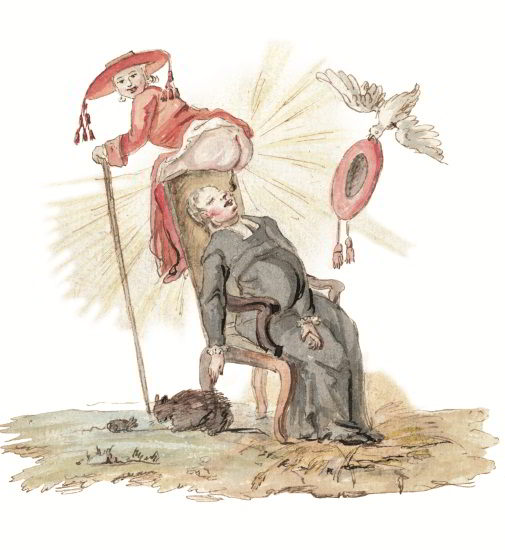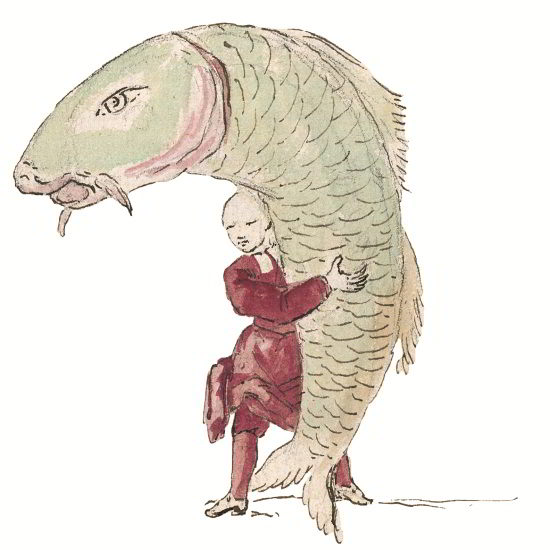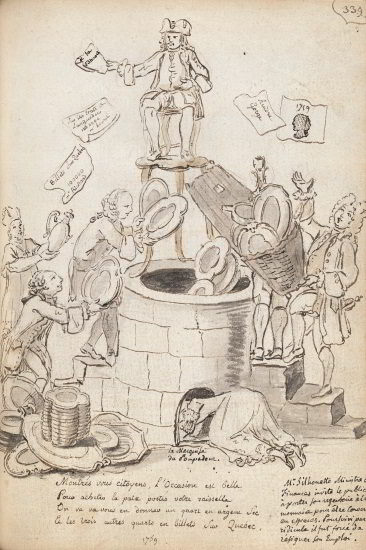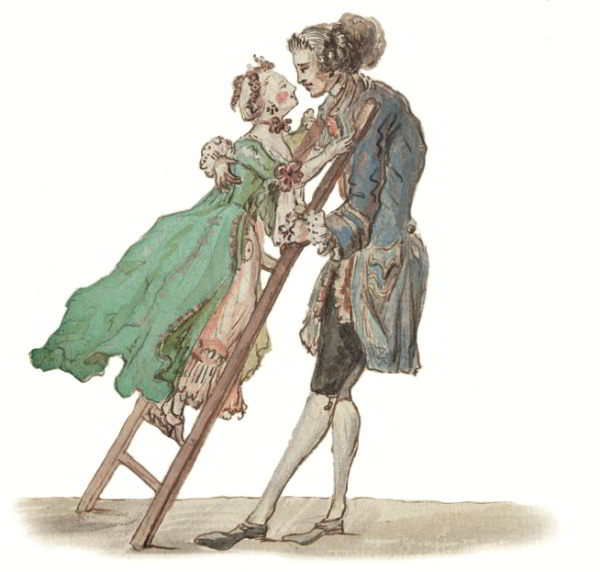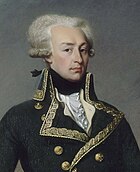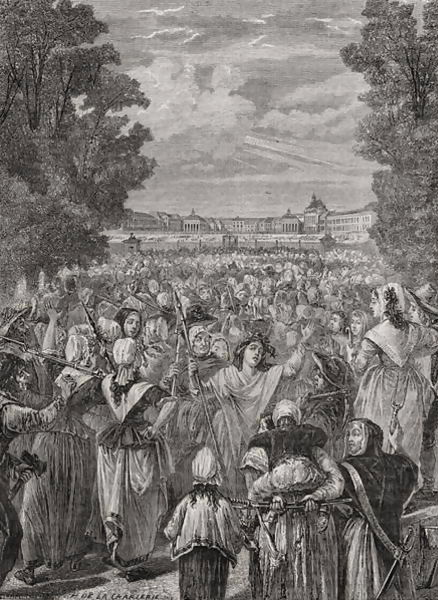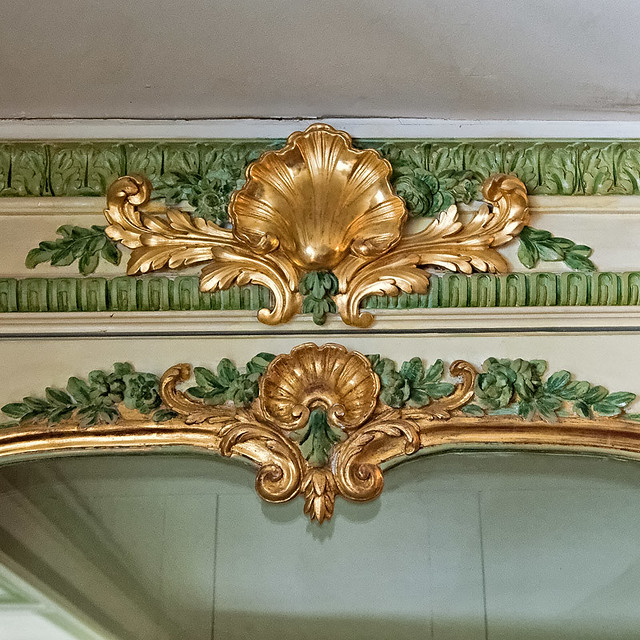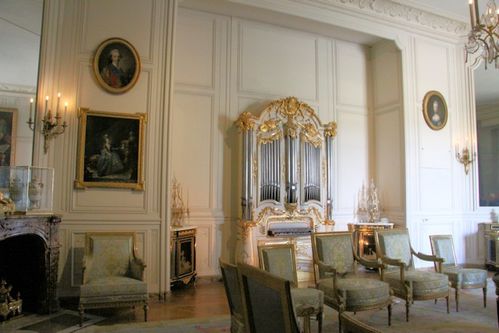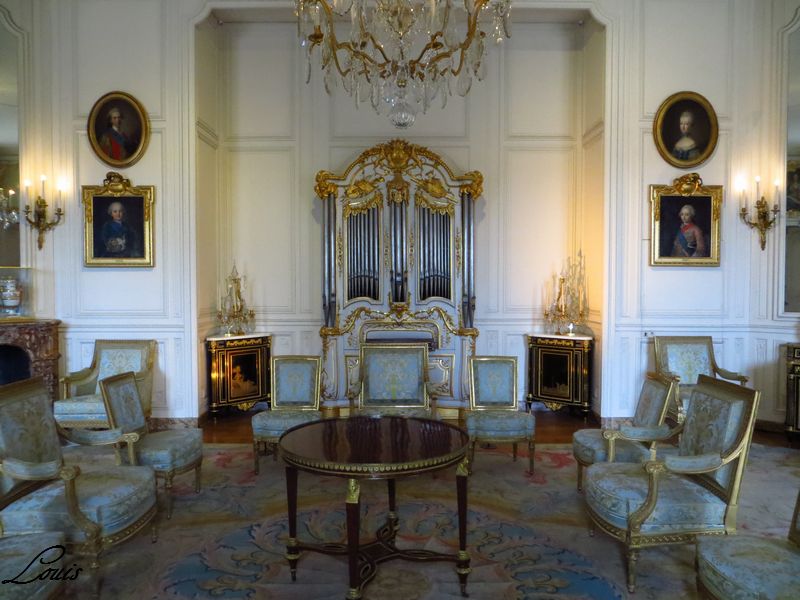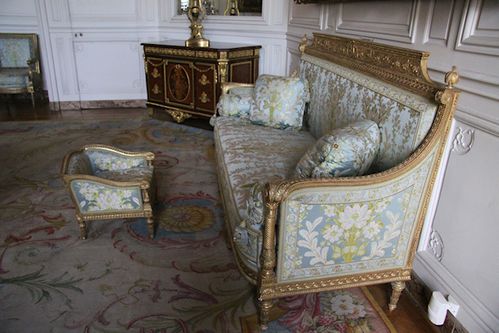Hygiene among the nobility was scarce and you can only imagine the smells that would come from hundreds of silk-clothed courtiers packed together at Versailles. One of the main reasons for this was the great fear of water; it was generally believed that diseases travelled through water so the less you bathed the less liable you were to catch a disease. It must have been obvious even to the courtiers themselves for during Louis XIV's reign the use of perfume was wide-spread. Actually the perfumed scent became so heavy in the airs of the gilded salons that the French court became known as "the Perfumed Court" (le cour perfumee). The Sun King himself was an eager consumer of the luxurious scents; he demanded that a different scent should fill his room each day.
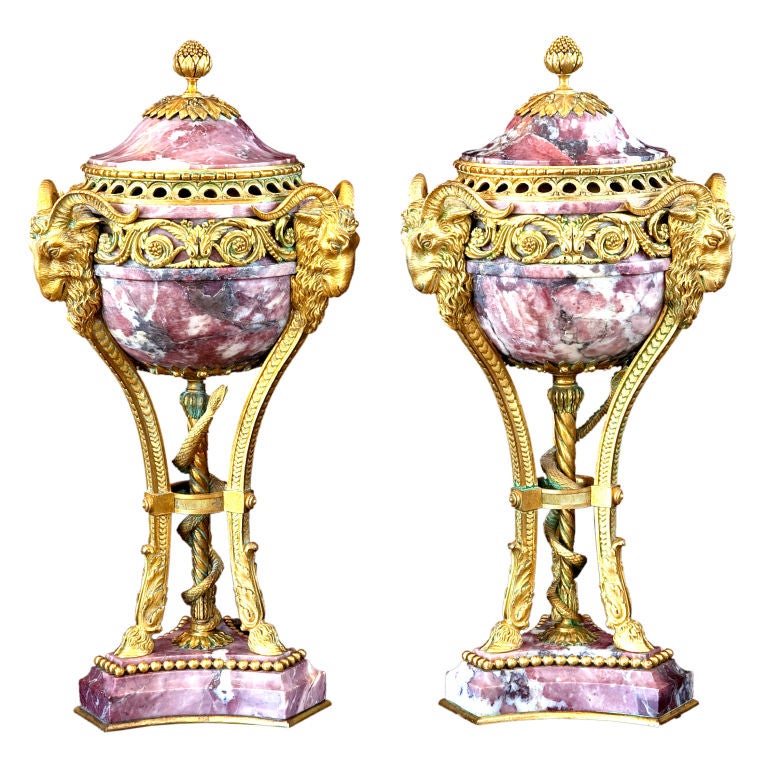 |
Perfume burners from the time of
Louis XVI |
But it was not just to hide a less pleasing scent that the French courtiers used perfume. Perfume was expensive and a sign of luxury; like clothing perfume was used as an indicator of one's wealth. Throughout the palace several bowls were placed filled with flower petals to sweeten the air; in the same manner perfume was sprayed onto furniture. Visitors could easily expect to be doused with perfume upon entry to the palace.
Even the fountain's water was scented with perfume! The constant exposure to perfume would have its effect on Louis XIV at the end of his life - he became excessively sensitive towards scents and the smallest mint of a flowered scent was known to give him a migraine.
The Prince de Condé even helped the King's perfumer Martial with scenting the King's tobacco! Madame de Pompadour was definitely not shy on perfume either. The distinctive scent of musk could still be found in her chamber's curtains 20 years after her departure.
Today we happen to know some of the fragrances used by different courtiers, so take a look - maybe they can inspire you:
The
Duchesse d'Aumont used coriander, iris, cloves, sweet flag and nut grass. Her scent was known as "à la Maréchale" because she was married to the Marshal of France.
Madame du Barry's favourite scent was made by the Italian perfumer Gian Paola Ferninis. Its original name was Aqua Admirabilis but that would not quite do at the French court where it was renamed as "Eau de Cologne". It was scented with neroli oil, bergamot, lavender, grape spirit and rosemary.
Of course,
Marie Antoinette, was a leading lady when it came to perfume. Especially two of her perfumed fragrances have survived: "Sillage de la Reine" (In the Wake of the Queen) and "Jardin Secret" (Secret Garden). Sillage de la Reine was made of tuberose, orange blossom, jasmine, sandalwood, iris and cedar.
Jardin Secret was scented with bergamot, cardamom, jasmine, rose, incense, sandalwood, vanilla, patchouli, amber and tonka bean - of course some of these were a very, very small part of the perfume.
Louis XIV was fond of heavy scents when he was younger - his mother used a chocolate-inspired perfume - and the Sun King loved to experiment with new scents. At the end of his life he could only stand the soft scent of orange blossom.
The King's mistress,
Madame de Montespan, used to bathe in water scented with vanilla.
Actually perfume became a problem between Louis XIV and Madame de Montespan. The couple was heard arguing as they stepped into the royal carriage with the Queen. Apparently, the King could not stand Madame de Montespan's perfume which was definitely not something that pleased his mistress. It is even said that she used heavy amounts of perfume because she could not take the smell of her royal lover!
 |
Louis XIV would get his orange blossom
from the orange trees at Versailles |
But there was a dangerous twist to this perfume frenzy. During the infamous Affair of the Poisons perfume was often used to either disguise poison - or as a poison. There is a story of a Duchesse who died after having her gloves rubbed in a scented poison that would then slowly be absorbed into her skin! The idea with using perfumed gloves was widely spread as well - though not with the same lethal purpose!
 It was a rather different type of animal that attracted Madame du Barry when she took over after Madame de Pompadour. This last favourite of Louis XV had always been fond of parrots! Her parrot's exquisite cage adorned with porcelain flowers is a testimony to how dear she held her feathered friend. Apparently, Madame du Barry had taught her parrot not only to recognize her but to loudly exclaim "there goes the lovely lady!" whenever she appeared. According to Joan Haslip in "Madame du Barry: the Wages of Beauty" the parrot had beautiful black feathers. After the death of Louis XV, Madame du Barry moved to her country residence of Louveciennes and took her parrot with her.
It was a rather different type of animal that attracted Madame du Barry when she took over after Madame de Pompadour. This last favourite of Louis XV had always been fond of parrots! Her parrot's exquisite cage adorned with porcelain flowers is a testimony to how dear she held her feathered friend. Apparently, Madame du Barry had taught her parrot not only to recognize her but to loudly exclaim "there goes the lovely lady!" whenever she appeared. According to Joan Haslip in "Madame du Barry: the Wages of Beauty" the parrot had beautiful black feathers. After the death of Louis XV, Madame du Barry moved to her country residence of Louveciennes and took her parrot with her.



